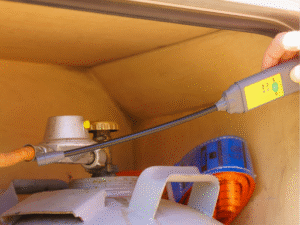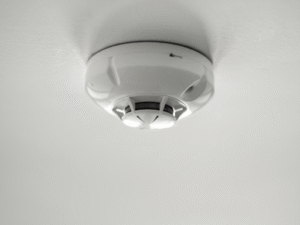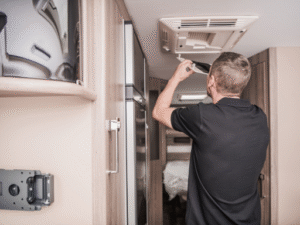When you’re travelling in your caravan, comfort and convenience are often top of mind. But there’s one unseen danger that every caravan owner should take seriously: carbon monoxide leaks. This invisible, odourless gas is known as the “silent killer” for a reason. It can build up quickly in small spaces like caravans and become deadly without warning.
Carbon monoxide, gas leaks, and caravan safety are not just buzzwords—they’re critical elements in ensuring your road trip doesn’t end in disaster.
Understanding the Danger
Carbon monoxide (CO) is produced when fuels such as gas, petrol, diesel, or wood do not burn completely. In caravans, common sources include gas stoves, heaters, hot water systems, and even portable generators. When these appliances are poorly maintained or improperly ventilated, the risk of carbon monoxide exposure increases significantly.
Unlike smoke or propane gas, carbon monoxide has no smell or taste. This makes it extremely hard to detect without the right tools. Prolonged exposure can cause headaches, dizziness, nausea, and fatigue—symptoms that are often mistaken for simple travel sickness or flu. In high enough concentrations, it can be fatal.
Warning Signs of CO Poisoning
Carbon monoxide poisoning can mimic common illnesses, making it harder to identify early on. The symptoms can worsen with prolonged exposure and may become life-threatening. Be aware of the following signs:
-
Headache
-
Nausea or vomiting
-
Dizziness or light-headedness
-
Breathlessness or tight chest
-
Sudden collapse
-
Confusion or disorientation
-
Loss of consciousness
If you or someone in your caravan experiences these symptoms—especially when gas appliances are running—turn everything off, ventilate the space immediately, and seek medical attention.
How to Detect Leaks Early
The first and most effective way to detect carbon monoxide is by installing a CO alarm in your caravan. These alarms are specifically designed to alert you before levels become dangerous. They’re small, inexpensive, and should be checked regularly to ensure the batteries are working.
It’s also important to be aware of warning signs. Yellow or orange pilot lights, soot stains around appliances, or a musty smell near gas equipment can all suggest incomplete combustion or poor ventilation—both of which increase carbon monoxide risk.
Regular servicing is crucial. Gas appliances should be inspected by a qualified technician at least once a year. Ventilation systems, exhaust flues, and seals should also be part of your routine safety checks.
Prevention Starts with Maintenance
Preventing carbon monoxide build-up starts with proper installation and maintenance. All gas appliances should be fitted and tested by licensed professionals. DIY jobs or poor-quality fittings are often the root cause of leaks.
Avoid using portable gas stoves, heaters, or generators inside your caravan or annex. These should only ever be operated outdoors in well-ventilated areas. Even in cold weather, keeping vents or windows slightly open while appliances are in use can make a big difference.
Before each trip, do a simple inspection: check for damage to hoses, connectors, and seals. Make sure nothing is blocking your ventilation or flue outlets. These quick checks can help prevent long-term hazards.
Protect Your Caravan and Your Loved Ones
There’s no need to be fearful when it comes to carbon monoxide—just be informed and prepared. The combination of a good-quality CO alarm, regular maintenance, and responsible appliance use is the best protection you can have.
At AllBrand Caravan Services, we’re dedicated to keeping your caravan safe, comfortable, and road-ready. We provide full gas system inspections, leak testing, and carbon monoxide safety checks to give you complete peace of mind before you travel.
📞 Call us: 07 3869 2969
📍 Visit: 101 Connaught Street, Sandgate QLD 4017
📧 Email: info@allbrandcs.com.au
Whether it’s a weekend trip or a months-long journey, make sure your caravan is a safe place to be. Book your inspection today.
Useful Resources:


